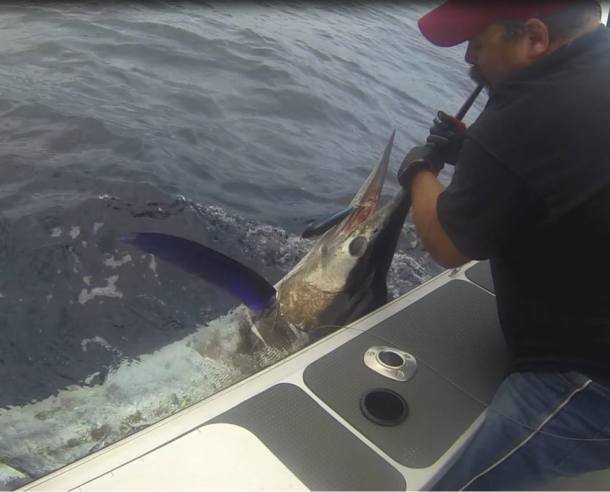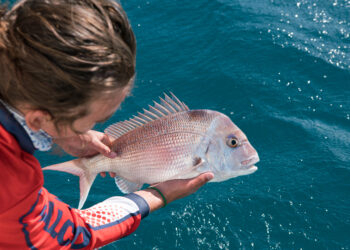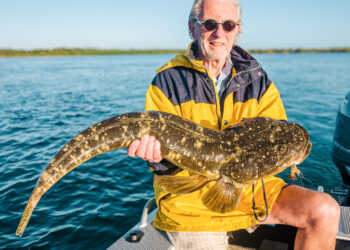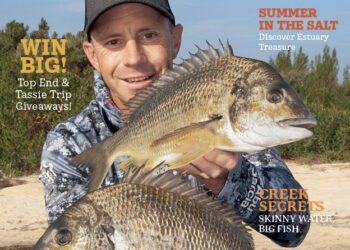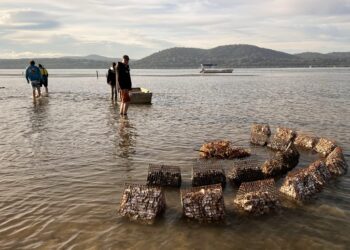FISHO recently reported on Tasmanian game crew Team Penn – Reel Gold’s efforts that saw them lead the tag & release category on weekend one of the NSWGFA Interclub Tournament.
Noteworthy from the result was that the team hadn’t previously fished Port Stephens, or reportedly caught marlin before. Read Interclub report here.
Following the publicity around their result, we were contacted by Reel Gold’s Adrian “Mozza” Morrisby who kindly offered to share his team’s techniques with Fisho readers.
He reports that the Reel Gold crew consisted of five anglers over each weekend of the tournament – Kelly Hunt, Clinton Howe, Stan Kaine, John Farrell (first weekend only) Cam Wise (2nd weekend only) and Adrian Morrisby.

Morrisby told Fisho:
We recently made the haul up from Tasmania to compete in the Interclub tournament out of Port Stephens in the Deegan Marine Surtees 6.7. We pinned four marlin and three yellowfin on the first weekend leaving us on top of the tag and release board.
Weekend two didn’t start the way we wanted with zeros on the Saturday dropping us to 4th place and requiring us to dig super deep for the last day. After dropping a good marlin on 15kg early in the day we thought our chances were over but in the last hour we pinned an estimated 75kg black marlin to leave us 3rd outright and one very happy crew.
Live baiting marlin is now considered the best way to hook a billfish with much better hook up rates and we went prepared to give it a try, but in Tasmania where we hail from live baiting is not an option due to the seal issues, so there was a lot of talk around the event about our lure spread and what we were using so I thought we would share it with you all here at Fishing World.
Lures v bait
The lure that accounted for the majority of our hook ups was a Zacatak “Redbait” skirt that was developed by team leader Hooch and Mario from Zacatak to suit the southern bluefin fishery in Tasmania. Upon our arrival at Port Stephens we headed to Mario’s house where he showed us a curious by-catch his mate Leon had while chasing bait the day before; it was in fact a redbait, never seen in these waters before. We thought it was worth throwing one into the spread, as it turned out, a good idea!
As can be seen by the picture of the spread (below) we ran the Redbait in a few positions and it worked on all, and even managed to grab four dolphinfish on a no comp day too – the only one in the spread as we were trialling some new designs for Mario.

The Sebile Bonga Jerk is a non-conventional lure that we trialled last year and got me my first “barrel” (121kg SBT) and we included it in the spread as much as for a teaser as a lure. Positioned just behind the teaser it treated me well with my first striped marlin; it did open some eyes when presented to the officials at the tag hand in, especially with the factory supplied trebles still in place (top quality) …
The Zacatak Redbait used two different designs, the longer head unit (Bunga) utilises lead shot in the head to make it sub surface and the Pusher style (Mini Sprocket) is a standard head lure from the Zacatak collection. Both were in 8-inch length.
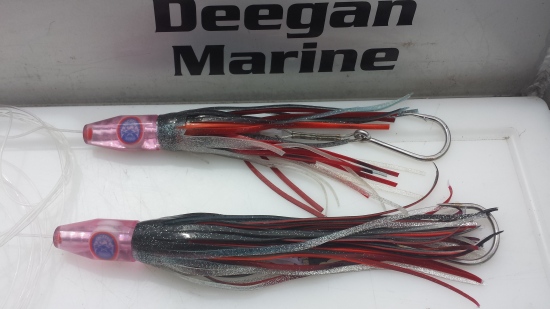
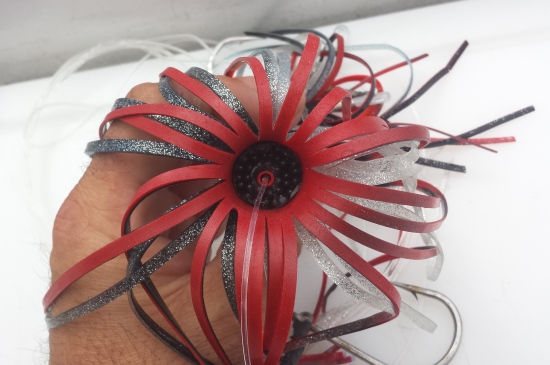
Zacatak Bunga in Redbait features lead in the head.


Zacatak Fatso (top) and Mini Sprocket.
The Zacatak “ Fatso” with a “Secret squid” skirt combination (10.5inch) makes an awesome smoke trail and also had many hits but lacked conversion rate, possibly due to our rigging.
We mostly used 200lb Penn wind-on leaders at 3m in length, except for the Bonga Jerk which was rigged with wire.
The current out on the shelf was pushing around 3-4 knots and made holding a course a challenge as well as getting the speed right depending on the direction of travel. Rather than look at the speed on the GPS we just watched the lures until they started “popping” and held it there, which was between 7-8 knots by my calculations.
I hope this information helps you hook up more often and enjoy your time on the water. Hope to catch you all at next year’s Interclub or on the water in Tasmania’s bluefin rich waters this season.
Adrian “Mozza” Morrisby.





